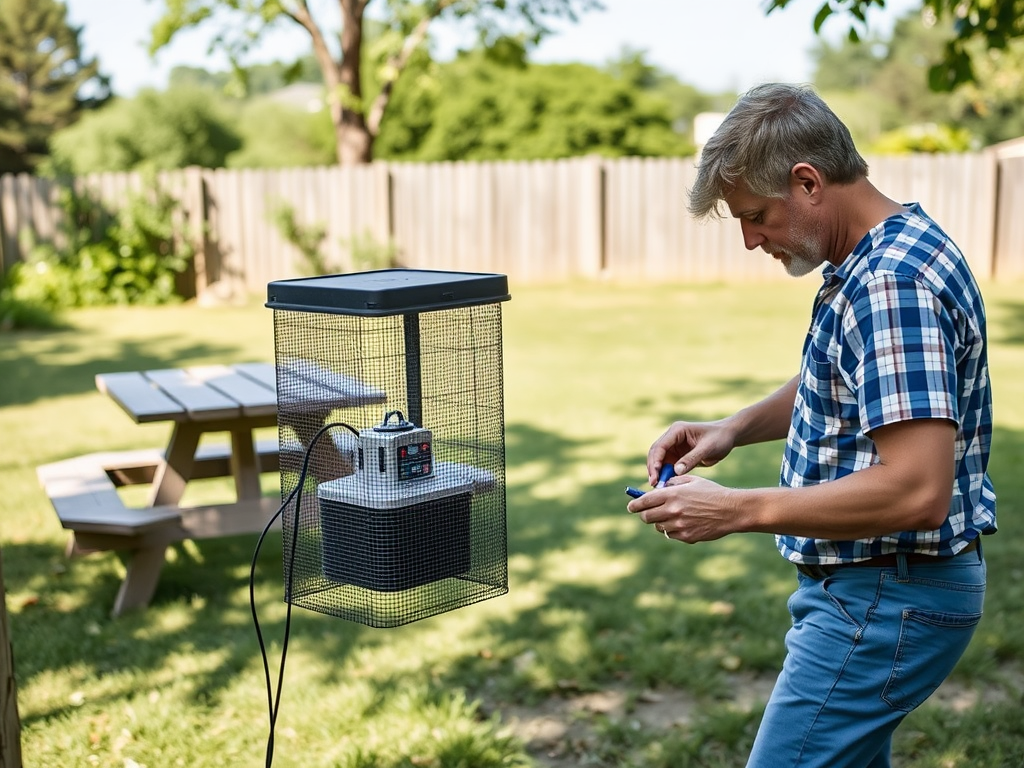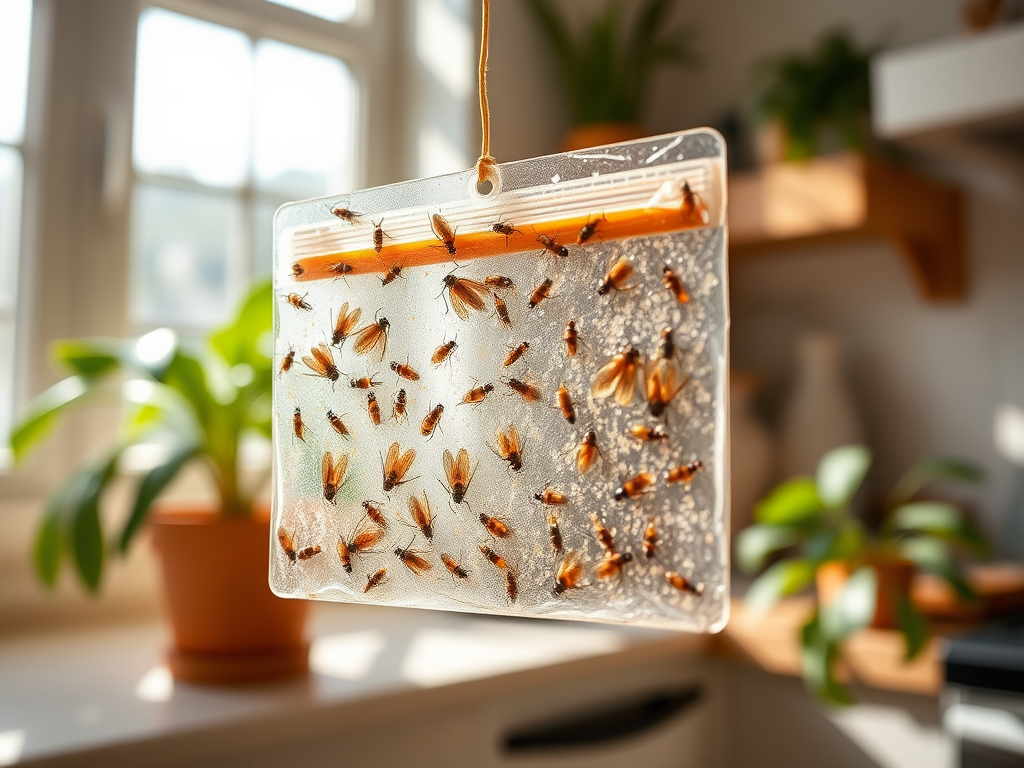In the quest for a peaceful, pest-free environment, few things are as vexing as the incessant buzzing of flies and gnats. These tiny nuisances not only disrupt our daily lives but can also endanger our health and property. The journey to reclaiming our space begins with understanding these insects and the various traps available in the market. Each trap serves a unique purpose, targeting specific behaviors and life stages of these pests. Hence, what if we told you that combining these different trapping methods could significantly enhance your pest control strategy? By integrating multiple approaches, you can effectively outsmart these relentless intruders.
Flies and gnats can breed rapidly and thrive in various environments. Their ability to adapt and search for food can make eradication a challenging task. However, by turning towards a combination of trapping methods, you can create a more formidable defensive line against these winged pests. This article aims to delve into the intricacies of fly and gnat traps while highlighting the advantages of employing multiple strategies for pest control.
Understanding Flies and Gnats

Before we explore traps, it’s essential to understand the adversary. Flies, particularly houseflies, are notorious for their resilience and adaptability. They can reproduce extremely quickly, laying hundreds of eggs in a single breeding cycle. Gnats, on the other hand, thrive in damp, humid environments, often infesting plants and soil. Each species has unique behaviors that influence the traps you choose. Thus, knowing their lifecycle stages can help in selecting the most effective methods to capture them.
Types of Fly and Gnat Traps

Sticky Traps
Sticky traps are simple yet effective solutions to catching flying pests. These traps are coated with a sticky substance that ensnares insects upon contact. They are particularly useful in homes, gardens, and farms where an unobtrusive yet effective solution is necessary. The beauty of sticky traps lies in their versatility—they can be hung in various locations, from windows to ceilings. Here are some advantages:
- Non-toxic and safe for use around children and pets.
- Requires no maintenance beyond positioning and replacement when full.
- Highly effective for a range of flying insects.
Electric Traps
Electric traps are another highly effective method for catching pests. These traps utilize a light source that attracts flies and gnats, zapping them upon contact. Ideal for both indoor and outdoor settings, electric traps can cover a larger area than traditional traps. They are especially beneficial in patios, backyards, and kitchens, where insects tend to gather. Here are notable features:
- Immediate kill method, reducing the number of pests rapidly.
- No chemicals required, making it safe for families.
- Long-lasting with a straightforward cleaning process.
Baited Traps
Baited traps use a lure to draw flies and gnats in for capture. The bait mimics the natural attractants these pests seek, whether it’s the scent of ripe fruit or the aroma of decaying organic matter. Baited traps are particularly effective in managing specific populations, especially in agricultural settings. They can be highly customizable based on the target insect. Key points include:
- Attracts a wide variety of pests with the right bait.
- Strategies can be modified based on the season.
- Visually detectable indicators for regular monitoring.
| Trap Type | Best For | Pros | Cons |
|---|---|---|---|
| Sticky Traps | General use | Non-toxic, easy to use | Limited range |
| Electric Traps | Outdoor spaces | Immediate kill, effective | Requires power source |
| Baited Traps | Food-related areas | Highly attractive to pests | Potentially messy |
Why Combining Trapping Methods Works
Using multiple trapping methods provides a comprehensive approach to pest management. Each type of trap targets different aspects of pest behavior, ensuring that you catch more insects than with a single method. The benefits are manifold; for instance, sticky traps can catch unsuspecting pests, while baited traps can draw in more active individuals. Such an ensemble can address the diverse needs of both residential and agricultural settings.
Increased Efficacy
By utilizing various traps, you effectively cover more ground, significantly enhancing your pest control efforts. The combination means that you can target various life stages of flies and gnats simultaneously. You’ll notice a decline in pest populations at a quicker pace, leading to a more comfortable living environment. Additionally, the presence of multiple traps can create confusion among these pests, making it harder for them to evade capture.
Cost-Effectiveness
Investing in multiple types of traps can actually reduce your long-term costs. By catching pests before they reproduce, you limit the need for more expensive treatments down the line. This proactive strategy will save you both time and money, allowing you to maintain a pest-free environment economically. Over time, the initial costs of various traps can be outweighed by the savings incurred through effective management.
Tips for Combining Trapping Methods
For maximum efficiency, here are some practical tips to combine your trapping methods effectively:
- Strategic Placement: Position traps in areas where you see the most activity, such as near garbage cans or entryways.
- Monitoring and Maintenance: Regularly check traps and replace them as necessary—to ensure optimal performance.
- Seasonal Considerations: Be aware of seasonal insects and adjust your trap types accordingly, such as increased baited traps in the summer months.
Conclusion
Combining different fly and gnat traps can revolutionize your pest control approach, leading to a more effective and economical solution. Understanding the unique characteristics of flies and gnats, as well as their behaviors, allows you to select the best traps tailored to your needs. By employing multiple traps, you’ll quickly notice a decrease in pest populations, cherishing a more serene living or working environment. Ultimately, integrating various methods optimizes your efforts, allowing you to reclaim your space from these persistent intruders.
Frequently Asked Questions
- What types of insects do fly and gnat traps catch? Fly and gnat traps are designed to attract and capture a variety of flying insects, primarily houseflies, fruit flies, and fungus gnats.
- How often should I replace my fly and gnat traps? It’s advisable to check traps weekly and replace them as needed, particularly if they become full or lose their effectiveness.
- Can I use DIY traps along with commercial traps? Yes, combining DIY traps with store-bought ones can enhance your pest control strategy.
- Are all traps safe for indoor use? Most traps are designed to be safe for indoor use, but always check product labels to ensure they are suitable for your environment.
- How do I know which trapping method to use? Consider the type of insects you’re dealing with, the space you’re trying to protect, and your budget when selecting trapping methods.
